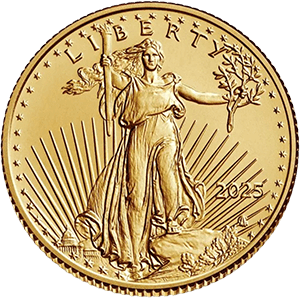The recent financial reports stress the price of gold, leading many to rethink their retirement planning. Inflation is deteriorating our savings; the stock market is unstable. Should we consider diversifying our retirement portfolios to include gold and doing so via a 401(k)? This sounds like a sensible strategy—until you get to the part about how, with traditional 401(k) plans, you cannot buy physical gold (bars or coins) to hold in that account.
While your employer's retirement plan won't let you stash gold coins in a vault somewhere, there are several legitimate ways to get gold exposure through your 401(k). Plus, if you're willing to explore beyond your current plan, you've got even more options that could give you exactly what you're looking for.
The Quick Truth About Gold in Your 401(k)
The main misunderstanding about 401(k) plans needs to be cleared up right from the start. Traditional 401(k) plans, which are sponsored by employers, are regulated by federal ERISA (Employee Retirement Income Security Act) guidelines. These regulations mandate that employers offer "prudent" investment options, which are usually just a handful of choices and tend to be mutual funds, stocks, and bonds. So when it comes to a physical gold investment, like a gold bar, you're just not going to see that as an option in a standard 401(k).
There is no need to worry, as there are available options to consider.
-
Gold ETFs (if your plan offers them)
-
Precious metals mutual funds
-
Gold mining company stocks
-
Commodity funds with gold exposure
-
Rolling over to a Gold IRA (when eligible)
Why Your 401(k) Has Limited Investment Choices
Your employer picks a 401(k) provider and creates an investment menu for employees. They're legally responsible for offering reasonable choices, which creates a natural tendency to stick with mainstream investments. Think about it from their perspective – they need options that work for everyone, from the 22-year-old new hire to the 64-year-old preparing for retirement.
This fiduciary responsibility means most plans offer maybe 20-30 investment choices, typically focused on stock and bond funds with different risk levels. Some progressive employers might include a "brokerage window" that opens up more options, but even then, physical gold is seldom on the menu.
Your Gold Investment Options Within a 401(k)
Gold ETFs: The Closest Thing to Owning Physical Gold
Gold Exchange-Traded Funds (ETFs) are probably your best bet for getting direct gold price exposure in your 401(k). These funds either hold physical gold in secure vaults or use financial instruments to track gold prices. When gold goes up 5%, your ETF should go up roughly 5% (minus small management fees).
Popular gold ETFs include:
-
SPDR Gold Shares (GLD): The largest gold ETF, backed by physical gold
-
iShares Gold Trust (IAU): Lower expense ratio, also physically backed
-
Aberdeen Standard Physical Gold Shares (SGOL): Stores gold in Switzerland
Your 401(k) needs to offer these specific funds or provide a brokerage window where you can buy them yourself. Check your plan's investment lineup.
Pros of Gold ETFs:
-
Direct correlation to gold prices
-
Easy to buy and sell
-
No storage or insurance headaches
-
Lower costs than physical gold
Cons of Gold ETFs:
-
Annual expense ratios (typically 0.25% - 0.40%)
-
You don't own actual gold
-
Potential tracking errors
-
Limited availability in many 401(k) plans
Precious Metals Mutual Funds: Professional Management with a Twist
If your plan doesn't offer gold ETFs, look for precious metals or natural resources mutual funds. These funds invest in companies involved in gold mining, silver production, and other precious metals businesses. While they don't track gold prices perfectly, they often provide leveraged exposure, meaning they might go up more than gold when prices rise (and fall more when prices drop).
These funds offer professional management and diversification across multiple companies and metals. You're essentially betting on the gold industry rather than gold itself.
What to look for:
-
Funds with "precious metals" or "gold" in the name
-
Natural resources funds with significant gold mining exposure
-
Global mining funds
The reality check: These funds can be more volatile than gold itself because you're dealing with company-specific risks like management decisions, mining accidents, or production costs.
Gold Mining Stocks: High Risk, High Potential Reward
Some 401(k) plans offer a "self-directed brokerage" option, letting you buy individual stocks. If yours does, you could invest in gold mining companies. Mining stocks offer leveraged exposure to gold prices. When gold rises, mining companies often see their profits soar, potentially pushing stock prices up even more.
Commodity Funds: The Diversification Play
Broad commodity funds might be your only option for gold exposure in some 401(k) plans. These funds invest across multiple commodities – gold, silver, oil, wheat, copper, and more. While your gold exposure gets diluted, you gain broader inflation protection.
Look for funds that specifically mention precious metals allocation. Some commodity funds focus heavily on energy and agriculture with minimal gold exposure, so read the fund descriptions carefully.
The Gold IRA Rollover: Your Path to Physical Gold
If you're serious about owning physical gold for retirement and your 401(k) doesn't cooperate, consider a Gold IRA rollover. This strategy works when you leave your job, retire, or sometimes even while still employed (through in-service withdrawals, if your plan allows).
When a Rollover Makes Sense
A Gold IRA rollover might be right for you if:
-
You're changing jobs or retiring
-
Your 401(k) offers zero gold investment options
-
You want to own physical gold, not paper assets
-
You're comfortable with slightly higher fees for direct ownership
-
You have enough retirement savings to diversify
The Step-by-Step Rollover Process
Step 1: Check Your Eligibility
Contact your 401(k) plan administrator. Ask if you're eligible for a rollover or in-service withdrawal. Job separation always qualifies, but some plans allow rollovers after age 59½ even while employed.
Step 2: Choose a Gold IRA Custodian
Not all IRA custodians handle precious metals. Look for established companies with:
-
IRS approval for precious metals IRAs
-
Transparent fee structures
-
Secure storage partnerships
-
Good Better Business Bureau ratings
-
Clear buyback policies
Step 3: Open Your Gold IRA Account
You'll choose between a traditional IRA (tax-deferred) or Roth IRA (tax-free growth) structure. This decision depends on your current tax situation and retirement plans.
Step 4: Fund Your Account
Request a direct rollover from your 401(k) to avoid taxes and penalties. The funds transfer directly between custodians – you never touch the money. This process typically takes 2-4 weeks.
Step 5: Select Your Precious Metals
IRS rules specify which gold products qualify for IRAs:
-
American Eagle coins
-
Canadian Maple Leaf coins
-
Austrian Philharmonic coins
-
Certain gold bars meeting purity standards
We will provide a full list of approved products.
Step 6: Arrange Secure Storage
IRS rules prohibit storing IRA gold at home. We will arrange storage at an approved depository with full insurance coverage.
Understanding the Costs
Let's talk real numbers. Gold investing isn't free, whether through your 401(k) or a Gold IRA.
401(k) Gold Investment Costs
Gold ETFs: Expect annual expense ratios of 0.25% to 0.60%. On a $10,000 investment, that's $25 to $60 per year.
Mutual Funds: Precious metals funds often charge 0.75% to 1.25% annually, plus potential sales loads.
Individual Stocks: Brokerage commissions (if any) plus the indirect costs of company operations affecting stock value.
Gold IRA Costs
Setup Fees: $50 to $150 for account establishment
Annual Maintenance: $75 to $300 for account administration
Storage Fees: $100 to $300 annually, depending on holdings
Insurance: Usually included in storage fees
Transaction Fees: Buying and selling charges vary by dealer
On a $50,000 Gold IRA, total annual costs might run $300 to $600, higher than ETFs, but you own physical gold.
Smart Strategies for Gold Investment Success
After helping thousands of investors add gold to their retirement portfolios, here's what consistently works:
Start Small: Begin with 5-10% of your portfolio in gold-related investments. This provides diversification without overexposure.
Dollar-Cost Average: Instead of investing a lump sum, spread purchases over several months to smooth out price volatility.
Rebalance Regularly: When gold soars (or crashes), adjust your holdings to maintain target allocation.
Consider Your Timeline: Younger investors can handle more volatility from mining stocks. Near-retirees might prefer stable gold ETFs or physical gold.
Don't Abandon Your 401(k): Even if rolling over some funds to a Gold IRA, keep contributing to your 401(k) for employer matching.
Making the Right Choice: 401(k) Options vs. Gold IRA
The best approach depends on your specific situation. Here's a practical comparison:
Stick with 401(k) Gold Options When:
-
Your employer offers matching contributions
-
You're satisfied with ETF or mutual fund exposure
-
You prefer maximum liquidity
-
You want to keep things simple
-
Fees are your primary concern
Consider a Gold IRA Rollover When:
-
You're leaving your job anyway
-
Physical gold ownership matters to you
-
Your 401(k) lacks any gold options
-
You want more control over investments
-
You're comfortable with moderate complexity
Your Next Steps
Ready to add gold to your retirement strategy? Here's your action plan:
-
Review your current 401(k) investment options – You might already have access to gold investments
-
Calculate your target allocation – Most experts suggest 5-15% in precious metals
-
Decide between paper and physical gold – ETFs for simplicity, Gold IRA for direct ownership
-
Consider your employment situation – Job changes create rollover opportunities
-
Consult professionals if needed – Consult with the experts of American Standard Gold. Call us at (877) 795-9585.
Gold can play a valuable role in retirement planning, offering protection against inflation and currency devaluation. Whether you access it through your existing 401(k) or explore Gold IRA options, the key is taking action while maintaining a balanced, diversified approach.
Start by checking your 401(k) investment menu today, or learn more about Gold IRA rollovers if you're ready for direct precious metals ownership. Your future self will thank you for taking steps toward a more secure retirement.


